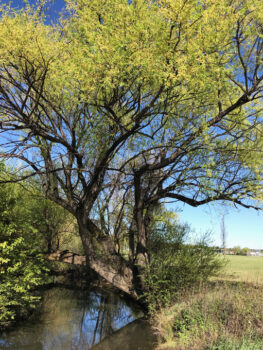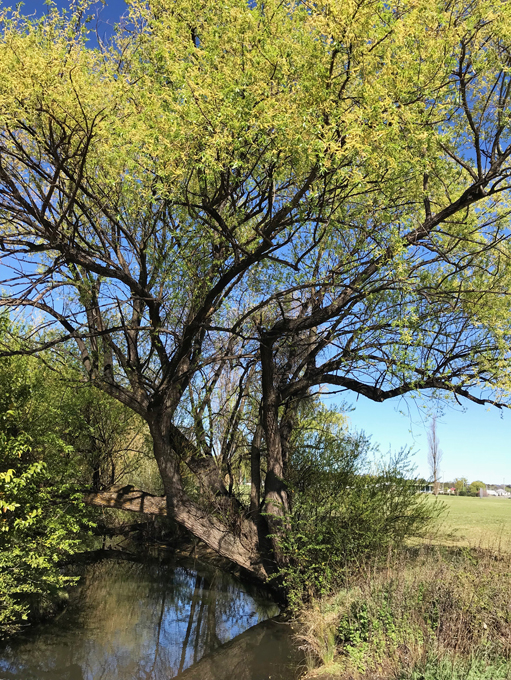 You may have noticed that there is a war on willows in Armidale’s creeks. What’s wrong with willows in the creek? Is there anywhere they can be planted?
You may have noticed that there is a war on willows in Armidale’s creeks. What’s wrong with willows in the creek? Is there anywhere they can be planted?
Willows belong to the genus Salix, with nine species occurring on the Northern Tablelands. Willows are commonly planted as ornamental trees, mainly for their decorative foliage. In the past, willows were widely planted along creek banks for erosion control in the belief that their fibrous roots would hold the bank together.
In most cases, willows do this job too well. They have massive networks of fibrous, surface roots that grow out into the water. These root mats trap sediment in the creek and hold it in place. Over time this has the effect of narrowing the stream channel and filling in the deep holes. Our highland creeks (such as Dumaresq Creek) were originally a series of deep pools connected by shallow ‘riffles’. Increased erosion in the catchment and willows trapping the sediment has resulted in the current fairly uniform depth of the creek. Willows readily regrow from broken pieces and rapidly take over entire creeks.
Another problem with willows is their deciduous leaves. In autumn the leaves fall off the tree over a very short time, ending up in the creek. As they decay they take all the oxygen out of the water, resulting in the death of fish and invertebrates. The original native trees would lose a few leaves all through the year with no sudden loss of oxygen.
Over the last 10 years Armidale Urban Rivercare Group, Southern New England Landcare and Armidale Tree Group have removed many willows from the banks of Dumaresq Creek, Black Gully and Yagoonda Gully to improve the health and function of the creeks. The willows have been replaced with local native trees and shrubs, which also provide food and habitat for birds and other animals.
So, is there a place for willows? Most definitely. As long as they are well back from creeks and rivers they make beautiful garden specimen trees. Weeping willows and Pussy Willows are good ones for gardens in this area.
By David Carr, Ecological Consultant
